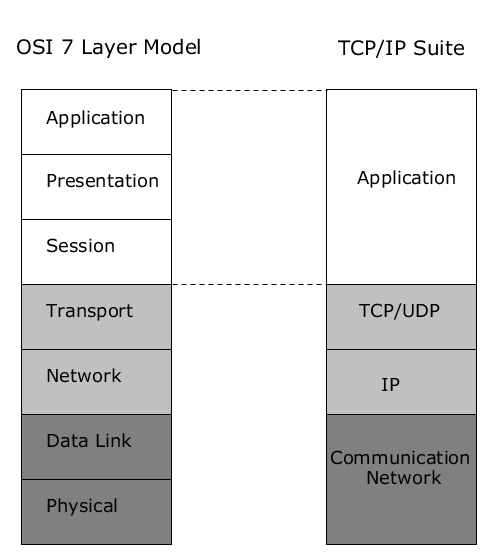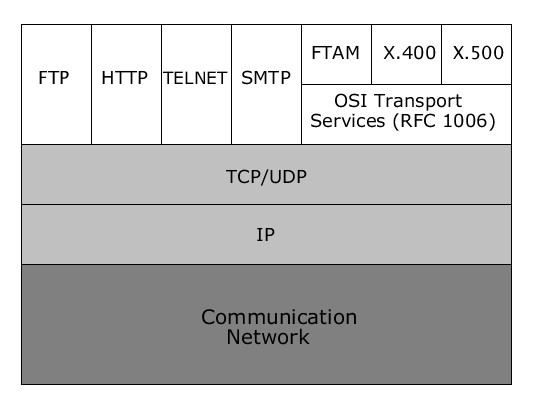A.14. Architectural concepts
168. The NISP is predominately based upon the concept of a federation of fixed and mobile systems that together form a NATO Intranet. Embodied within the NISP, therefore, is the concept of a technical architecture that has the Internet standards and protocols at its heart. Central to these is the four-layer TCP/IP protocol stack which many applications (e.g. SMTP email) are designed to use. The layers are:
-
communications network layer;
-
Internet Protocol (IP) layer;
-
TCP and UDP layer;
-
applications layer;
169. Other mandated applications, however, (e.g. X.400 messaging) have been designed to use the seven-layer OSI protocol stack (see Figure A.2) which has the following seven layers:
-
physical layer;
-
data link layer;
-
network layer;
-
transport layer;
-
session layer;
-
presentation layer;
-
application layer;
170. These two protocol stacks align as shown in Figure A.2. Their use creates a dichotomy in the NISP that requires ISO transport services to be layered on top of TCP/IP (as defined in RFC 1006).

Figure A.2. OSI and TCP/IP Protocol Stacks
171. Both of these stacks are embodied in the NISP, although their purpose may not be immediately obvious, so that ISO-based applications such as X.400 and X.500 can be supported as illustrated in Figure A.3.

Figure A.3. OSI and TCP/IP Applications